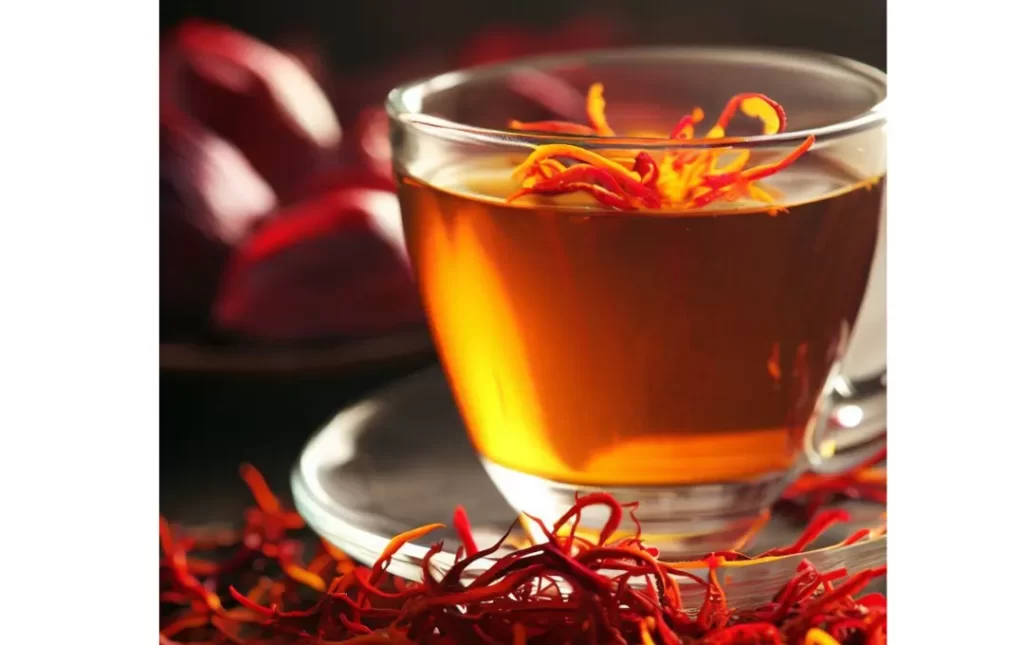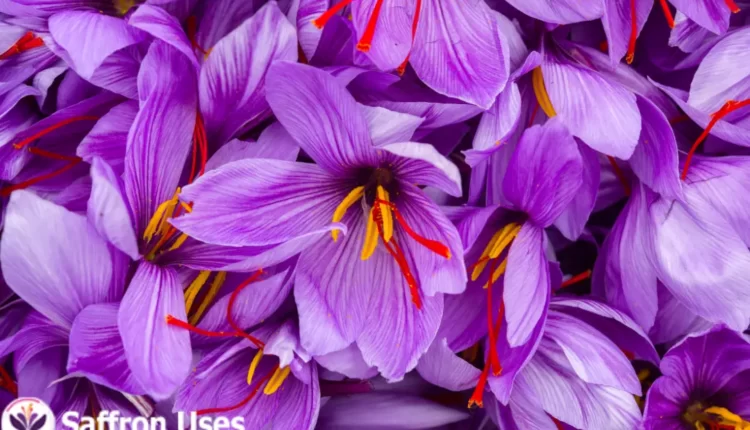Have you ever used saffron petals? Are you familiar with the amazing properties of this beautiful flower? saffron is a plant belonging to the family Iridaceae or the Iris family. This substance is used as a food coloring and flavoring agent in culinary preparations and has applications in cosmetics. Compared to other parts of the plant, saffron stigmas or threads have a wider range of uses in culinary, cosmetic, and medicinal applications. Studies have shown that saffron stigmas contain crocin, crocetin, picrocrocin, and safranal. The color of saffron is attributed to crocin, while its medicinal properties are associated with crocetin.

Additionally, saffron contains flavonoids, anthocyanins, vitamins such as riboflavin and thiamine, proteins, starch, amino acids, minerals, and gum. In traditional medicine, saffron is a mineral substance, antispasmodic, antioxidant, stomach pain reliever, stress reliever, antidepressant, and sleep aid. Saffron stigma powder is also used in the treatment of dysentery. Other traditional uses include antibacterial, antifungal, and antiseptic effects. In modern medicine, saffron stigma’s medicinal properties have been reported to include neuroprotective, anticonvulsant, antidepressant, anti-anxiety, cardiovascular strengthening, anticancer, and potent antioxidant effects.
Saffron petals are the main byproduct of saffron processing, which is produced in large quantities but is not widely used and is mostly discarded. However, it should be noted that saffron petals contain several compounds, such as minerals, anthocyanins, flavonoids, glycosides, alkaloids, and kaempferols.
Since saffron petals are cheaper than saffron threads and are produced in large quantities, they can be considered a suitable source for various purposes. Studies on saffron petals have identified medicinal properties such as antibacterial, antispasmodic, immune-boosting, cough-suppressing, antidepressant, pain-relieving, liver-related issues, blood pressure control, antidiabetic activity, and antioxidant effects.
Given these properties, saffron petals can be an alternative or complementary herbal remedy for certain diseases.
Saffron Petals Properties:
Today, saffron petals are used as an organic substance in agricultural industries, and considering their phytochemical compounds and traditional applications, they can be used for various medicinal purposes. The medicinal properties of saffron petals include:
Antibacterial:
Food poisoning can occur through consuming contaminated food, toxic plants, fungi, or animal substances and entering bacteria into the body. The use of antibacterial substances can be effective in preventing bacterial growth. Studies have shown that some natural products, such as essential oils, plants, and spices, have antimicrobial or antifungal properties and can be antibacterial and antimicrobial agents. Saffron petals possess this property and can assist in improving food poisoning.
Antispasmodic Effects:
Saffron petal extract reduces the electrical field stimulation (EFS)-induced contractions in laboratory mice experiments. The saffron petal extract reduces the contractions caused by EFS by inhibiting muscarinic receptors.
Respiratory Improvement:
Saffron flowers treat various respiratory conditions such as asthma, cough, and bronchitis. These respiratory ailments can cause breathing difficulties and chest congestion, which can be alleviated by using antioxidant substances like saffron. Research has shown that saffron petals have antioxidant properties that relieve and promote calmness. Saffron also improves oxygenation, making it suitable for individuals with respiratory problems.
Immune System Boost:
Many herbal medicines impact the immune system and its functioning in the body. The role of herbal medicines in modulating cytokine secretion, histamine release, immunoglobulin secretion, cellular receptors, lymphocyte activation, and phagocytosis has been reported in various studies. When consumed in a dosage of 75 milligrams, Saffron petals can stimulate the body’s immune system.
Improvement of Premenstrual Syndrome (PMS):
In a clinical study, women aged 20 to 45 who had experienced PMS symptoms for at least six months consumed saffron petals twice daily (15 milligrams in the morning and 15 milligrams in the afternoon). The results of this study demonstrated that the consumption of saffron petals is effective in improving premenstrual syndrome (PMS).
While these properties have been reported in studies, it’s important to consult a healthcare professional before using saffron petals for medicinal purposes.

Products Made from Saffron Petals
Food and Industrial Coloring
One of the uses of saffron petals is in the industry for producing carpet and fabric dyes that require natural colors. Saffron petals are also used in the production of food coloring due to the plant’s properties and benefits, which makes them highly popular.
In recent years, with the discovery of the harmful effects of synthetic and chemical dyes and many of them being phased out of production, there is a greater emphasis on replacing them with natural colors.
In the past, during saffron harvesting, the stigma, which consists of three threads in the flower, was used, and after separating them, the remaining parts of the saffron flower were discarded as waste. However, nowadays, after discovering the color intensity of saffron petals, they are also used as commercial products. If the extracted color is placed in an acidic environment, it turns red, which was initially discovered in Western countries.
Benefits of Saffron Petal Extract
- Its antidepressant properties.
- Stimulating effects.
- Increased blood flow in the veins.
- Memory enhancement.
- Prevention of Alzheimer’s disease.
Saffron Petal Infusion
The infused saffron petal has similar properties to the original saffron stigmas. You can pour some of it into the water and let it steep at indirect heat. Saffron-infused tea has numerous health benefits and has been highly popular among Iranians due to its aroma and fragrance. It is commonly consumed with honey and a bit of lemon juice. This tea aids in better digestion of food. Saffron extract has also been able to inhibit tumor growth in many cases.
F&Q
What are saffron petals?
Saffron petals are the part of the saffron flower that remains after the petals are harvested and the saffron threads are extracted from them. The petals are usually discarded, but they contain many nutrients and antioxidants that can be beneficial for health.
What are the health benefits of saffron petals?
Saffron petals have many health benefits, including:
Improved heart and vascular health
Reduced inflammation
Improved brain function
Reduced symptoms of depression and anxiety
Improved skin and hair health
Aid in weight loss
How can I use saffron petals?
Saffron petals can be used fresh, dried, or powdered. Fresh petals can be added to salads, soups, and stews. Dried petals can be added to tea or infusions. Powdered petals can be added to cooked dishes.
What are the side effects of saffron petals?
Saffron petals are generally safe, but in some people they can cause side effects such as nausea, vomiting, and diarrhea. Saffron can also interact with some medications. Before using saffron petals, consult with your doctor.
Where can I buy saffron petals?
Saffron petals can be purchased in grocery stores, herbal shops, and online. When purchasing saffron petals, make sure that the petals are fresh and of good quality.


